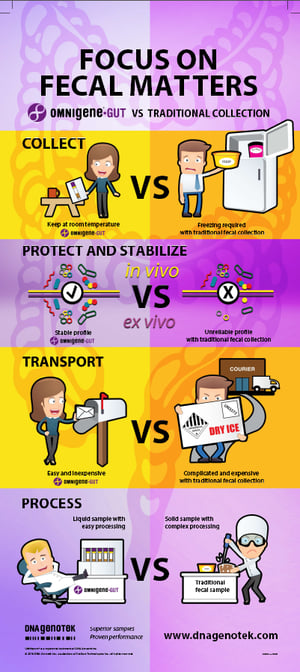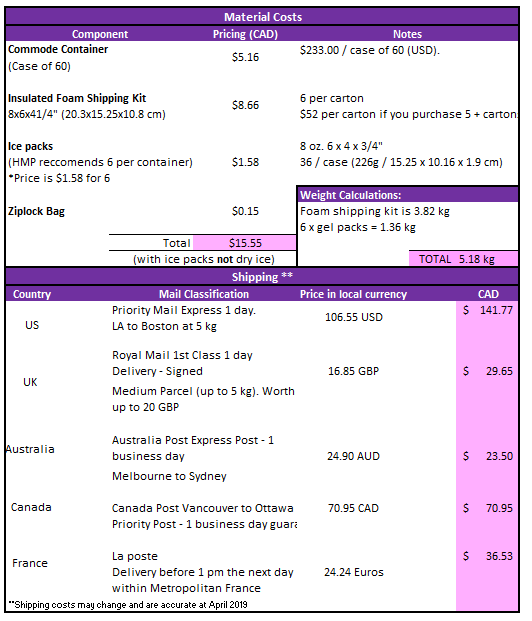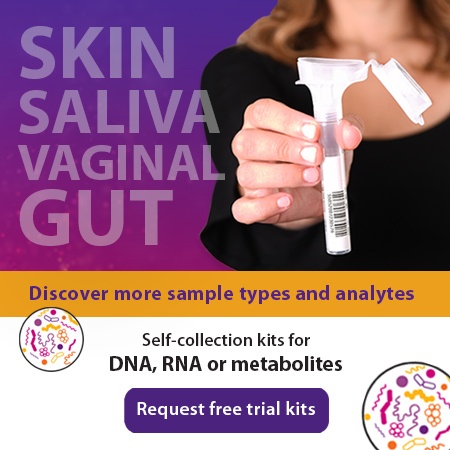2019-04-09
In this first of a three-part blog series, I am delving into the topic of cold-chain stool collection and transportation. I will explore the challenges of collection and transportation using cold-chain in part 1, take a deep dive into the potential sources of error and bias introduced in part 2, and lastly outline best practices for performing validations in part 3.
Recent advances in gut microbiome research have been extraordinary. Our knowledge of the link between bacterial communities in the gut and its impact on health has been perceived as one of the most intriguing advancements in recent scientific research.
Finding donors willing to provide stool samples is a challenging yet crucial part of a microbiome researcher’s job. Starting a microbiome study can be exciting, yet you can’t help but think about some of the complications that arise when deciding to ask your participants to donate their stool sample.
Traditionally, the easiest method of stool sample collection was perceived to be through cold-chain transportation, where researchers provide their participants with a standard plastic-style container and ask them to ship it back to the lab using dry ice or frozen ice packs. Though this method sounds simple, it will cost more than you think and not just in terms of financial cost. Although it is important to eliminate the “ick” factor for research participants, researchers also need to think about the effect cold-chain transportation of stool samples can have on the project or lab members who deal with the stool sample once it arrives.
Let’s pretend you’ve started your study and you’ve decided to track one of your samples from “Donor X”.
The shopping list
When conducting a study using a cold-chain collection method, you will need to provide your participant with a number of items that are necessary to ensure your sample is collected and returned:
- Styrofoam box
- Gloves
- Ice pack
- Stool collection containers
- Other shipping materials
Dealing with multiple vendors and coordinating the arrival of all items can be challenging and time consuming. Depending on the sample size of your study, you will also spend many hours assembling all of the components into one package to be donor ready. Once the sample collection package is ready to go, the next step is to have your donor consent to providing their stool sample…and hope they send it back.
Storage wars
 Compliance is an important component of a microbiome study that is often overlooked. In order to simplify the recruitment process, it’s important to ensure that you consider participant feedback when developing your protocol. Having a sample collection method that is easy to use for at home collection will simplify recruitment and increase the likelihood of your sample being returned to the lab.
Compliance is an important component of a microbiome study that is often overlooked. In order to simplify the recruitment process, it’s important to ensure that you consider participant feedback when developing your protocol. Having a sample collection method that is easy to use for at home collection will simplify recruitment and increase the likelihood of your sample being returned to the lab.
Logistically, collecting samples for large cohorts becomes difficult as your samples need to be kept extremely cold between defecation and donation. The ultimate goal of fecal microbiome analysis is to have a snapshot of the microbiome profile at time of donation ensuring there is no change between the profiles of bacteria at the time of collection vs. the point at which it is processed. Leaving stool at temperatures higher than -80oC can introduce bias into your sample, ultimately affecting the reproducibility of the study.
Depending on your protocol, you may ask participants to place the collected sample in a Styrofoam box with ice or store the sample in their household freezer. Both options have drawbacks. At this stage, you can only hope your participant placed the stool into the box or freezer as quickly as possible before the sample begins to incur microbial changes. Asking participants to store samples in their freezer (beside their food) may seem like the safest option, however, common household freezers go through constant defrost cycles that can introduce bias within your samples.
Once the samples are ready to ship, they need to be shipped or brought to the lab as soon as possible. The cost to have the samples shipped overnight can outweigh the cost of your collection kit components combined. For example, the average price for dry-ice is about $2.00 USD per half a kilogram, which can add up quickly. [1]
What goes around comes around
The arrival of the sample at the lab can have its own challenges. Unless you are analyzing your samples immediately, you will need a lot of storage space for all your plastic containers in order to bank your samples until you are ready for downstream processing.
One study cost that is often overlooked is the time spent by the lab technician to prepare the sample for analysis. The lab technician begins by thawing the sample, sawing off a chunk of frozen faecal sample, all whilst working in a sterile environment and having to clean down their hood in between each sample. Sounds exhausting doesn’t it?
Now that you’ve done all that, let’s break down the cost of each step:

Table 1. Cost analysis of cold-chain sample collection and transportation, based on an internal DNA Genotek study.
Inevitably, what you thought of as a simple, cost-effective solution could take more time and money that you thought.
Conclusion
OMNIgene·GUT eliminates the challenges above and is a cost-effective and easy to use faecal device which facilitates stabilization at room temperature for 60 days without the need for cold chain.
- Abrahamson et al, collected stool samples from a large cohort of elderly men. Out of 1328 men, the participation rate was 74%. “The quality of microbial DNA acquired from the samples was excellent…OMNIgene collection kit was accepted well by the participants who were surveyed, and the process of sample transfer by mail was uniformly successful”. [2]
- Song et al, compared OMNIgene⋅GUT to traditional methods, stating that stool collection with OMNIgene·GUT has many great advantages such as a non-toxic stabilizing reagent, self-collection, consistent volume, and most of all room temperature storage. [3]
For more information about the benefits of transportation and collection with OMNIgene·GUT stool collection kits, If you’d like to request free trial samples of OMNIgene·GUT, click below.
Links to other blogs in this series
Cold chain stool sample collection - as series of unfortunate events part 2 of 3
Cold chain stool sample collection - as series of unfortunate events part 3 of 3
References:
[1] https://www.continentalcarbonic.com/faqs.html
[2] Abrahamson et al. Successful collection of stool samples for microbiome analyses from a large community-based population of elderly men. Contemp Cl Tri Comm. 7:158-167 (2017).
[3] Song et al. Progress of analytical tools and techniques for human gut microbiome research. Journal of Microbiology. 56 (10):693-705 (2018).


